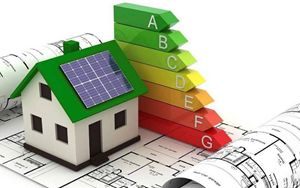(Finance) – Just over half of the offices in Italy it appears to have the lowest percentages of energy requalification, of major renovations and new buildings: according to a study by Politecnico di Milano, about 55% of the properties oscillate between energy class G and E. This translates, for buildings of this type, certificates in class E, F and G, in an overall CO2 emission that varies between 60 and 63 kg/m2/year; it should be considered that a real estate unit in class A4 emits 90% less CO2 than one in class F (9.7 kg/m2/year).
This is what emerged today at the event “ReFocus: Decarbonization Objective” organized by CBRE Global Workplace Solutions, the facility management division of CBRE Group, at the headquarters of the Giangiacomo Feltrinelli Foundation in Milan. The study shows that there are 633,000 office-type real estate units in Italy and just over half are located in the north of the country, but only 8.4% are certified with energy rating TO. In addition to the CBRE GWS representatives, Prof. Niccolò Aste, Prof. Andrea Ciaramella and Prof. Claudio Del Pero of the ABC Department of the Milan Polytechnic also attended, together with the astronaut Paolo Nespoli.
“We have to go back to focusing carefully on sustainability in a concrete way – he says Matt Cook, CEO of CBRE GWS Italy -. With this objective we have used the term ReFocus: placing the emphasis once again on environmental issues is essential to comply with the European directives on total decarbonisation by 2050. The challenge is long, but there are the tools to achieve this goal”. The policies of decarbonization taking place inEuropean Unionwhich aim to reach net zero by 2050, are needed to mitigate climate change, meet the Paris Agreement and avoid an increase in global temperatures of more than 1.5°C above pre-industrial levels.
Worldwide, the building sector is responsible for about 40% of the global energy consumption and 39% of global CO2 emissions: 28% derives from the operation of buildings while 11% from materials and construction processes. Due to the expected population increase, this consumption is estimated to reach 53% over the next decade, with a likely related increase in emissions. Consequently, a future a zero emissions it is not possible without the contextual decarbonisation of buildings. The building sector must decarbonise by reducing energy intensity by at least 80% by 2030 and be climate neutral by 2050.
This can be achieved thanks to some measures ranging from the redevelopment of glass surfaces, with associated improvements to the insulation of buildings, up to the elimination of fossil fuels and the electrification of uses related to air conditioning. Without forgetting the maximization of the surfaces destined for photovoltaic solar systems: considering that a nZEB (Nearly Zero Energy Buildings), has an overall electricity consumption of about 40-50 kWh/m2, a photovoltaic surface equal to about 15%-25% of the total heated surface supplies 100% of the annual energy requirement.
